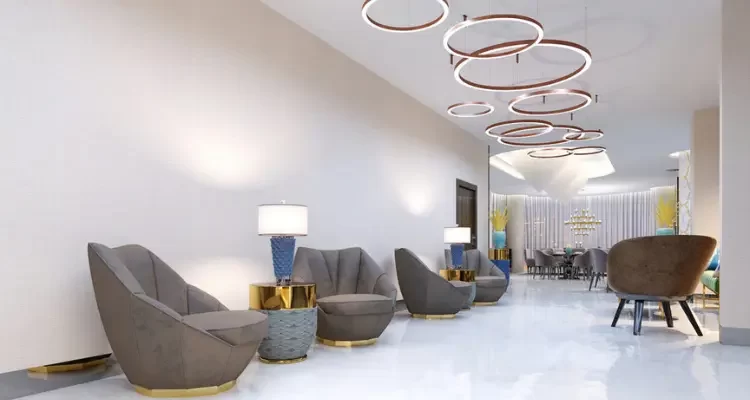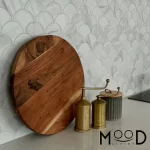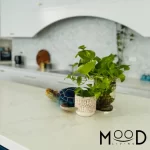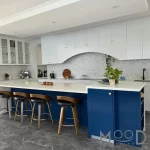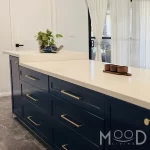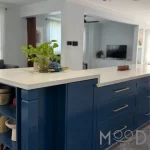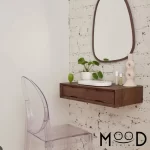Discover the Best Commercial Interior Designers in Sydney: A Comprehensive Guide
In the bustling city of Sydney, where business and innovation thrive, the role of best commercial interior designers in Sydney has never been more crucial.
Commercial interior design is not just about aesthetics; it’s about creating functional, efficient, and inviting spaces that enhance the operational efficiency and brand identity of businesses.
Whether you’re running a sleek office, a chic retail space, or a welcoming hospitality venue, a well-designed commercial space can significantly impact your business’s success.
Why Invest in Professional Commercial Interior Design in Sydney?
Investing in professional commercial interior design in Sydney offers numerous advantages:
Enhanced Brand Identity
A well-designed commercial space reflects your brand’s identity and values.
It can communicate professionalism, creativity, and quality, setting the tone for how clients and customers perceive your business.
Increased Productivity
An efficient layout and ergonomic design can boost employee productivity.
Well-planned workspaces facilitate collaboration and reduce stress, contributing to a more effective and engaged workforce.
Improved Customer Experience
For retail and hospitality businesses, the customer experience is paramount.
A thoughtfully designed space can create a positive and memorable experience, encouraging repeat business and word-of-mouth referrals.
Cost Efficiency
Investing in quality design upfront can save money in the long run.
A well-planned space minimizes the need for costly renovations and operational disruptions.
Compliance and Safety
Professional commercial interior designers ensure that commercial spaces comply with local building codes and safety regulations, protecting your business from potential legal issues.
Key Considerations for Commercial Interior Design in Sydney
When embarking on a commercial interior design project in Sydney, several key considerations should guide the design process:
Functionality and Layout:
The layout of your commercial space should align with its intended use. For offices, consider workflow efficiency, collaboration areas, and private workstations.
For retail spaces, focus on customer flow and product placement. In hospitality, prioritize guest comfort and service areas.
Brand Integration:
Your space should embody your brand’s ethos and values.
Incorporate brand colors, logos, and design elements that resonate with your company’s identity. This cohesion enhances brand recognition and customer loyalty.
Ergonomics and Comfort:
The comfort of your employees and customers is crucial.
Invest in ergonomic furniture, appropriate lighting, and climate control systems to ensure a pleasant and productive environment.
Sustainability:
With increasing awareness of environmental issues, sustainable design practices are more important than ever.
Consider using eco-friendly materials, energy-efficient lighting, and sustainable building practices to reduce your environmental footprint.
Aesthetic Appeal:
While functionality is key, the aesthetic appeal of your space cannot be overlooked.
Choose a design style that complements your brand and appeals to your target audience, whether it’s modern, traditional, or eclectic.
Technology Integration:
Modern commercial spaces often require advanced technology.
Incorporate smart systems for lighting, temperature control, and audio-visual needs to enhance functionality and convenience.
Trends in Commercial Interior Design in Sydney
Staying updated with current design trends can help you create a space that is both innovative and relevant:
- Biophilic Design: Integrating natural elements into your design can improve well-being and productivity.
Incorporate plants, natural light, and organic materials to create a soothing and invigorating environment.
- Flexible Spaces: The demand for flexible, multi-use spaces is growing.
Design layouts that can easily adapt to changing needs, such as movable partitions and versatile furniture.
- Sustainable Materials: Green building materials, such as recycled or rapidly renewable materials, are becoming more popular.
They offer durability and contribute to a healthier indoor environment.
- Tech-Driven Environments: Incorporate the latest technology, such as Iota devices and smart systems, to create a connected and efficient workspace.
This includes features like automated lighting, temperature control, and integrated AV systems.
- Industrial Chic: The industrial style, characterized by raw materials and exposed structures, continues to be popular.
It creates a modern and edgy look that is particularly suited to urban environments.
- Minimalist Design: A focus on simplicity and functionality with clean lines and uncluttered spaces remains a strong trend.
This design approach enhances clarity and productivity.
The Design Process: From Concept to Completion
A successful commercial interior design project involves several stages:
- Initial Consultation: Begin with a thorough consultation to understand your needs, goals, and vision.
Discuss your brand identity, functional requirements, and budget.
- Concept Development: The designer will create initial concepts and design proposals based on your input.
This includes layout options, color schemes, and material choices.
- Design Refinement: Review and refine the design concept based on feedback.
This stage involves finalizing layouts, selecting finishes, and integrating necessary technology.
- Documentation and Planning: Detailed drawings, specifications, and schedules are prepared.
This includes construction documents, furniture plans, and a timeline for project completion.
- Implementation: The design is brought to life through construction, procurement, and installation.
Regular site visits and coordination with contractors ensure the design is executed as planned.
- Final Review and Handover: Once the project is complete, conduct a final review to ensure everything meets your expectations.
Address any issues or adjustments before officially handing over the space.
Choosing the Right Commercial Interior Designer in Sydney
Selecting a qualified commercial interior designer is crucial for a successful project. Consider the following factors:
- Experience and Expertise: Choose a designer with a proven track record in commercial projects. Review their portfolio to assess their style and capability.
- Reputation and Reviews: Look for designers with positive client testimonials and industry recognition. Online reviews and referrals can provide valuable insights.
- Creative Vision: Ensure the designer’s creative vision aligns with your brand and project goals. They should offer innovative solutions that reflect your business’s identity.
- Communication and Collaboration: Effective communication is key to a successful project. Choose a designer who listens to your needs, provides clear updates, and collaborates effectively.
- Budget and Timelines: Discuss your budget and project timelines upfront. Ensure the designer can work within your financial constraints and deliver on time.
Conclusion
Best Commercial interior design is a powerful tool for enhancing business operations and brand presence.
In Sydney, a city known for its dynamic business environment, investing in professional interior design in Sydney can set your business apart from the competition.
By focusing on functionality, brand integration, and current design trends, you can create a space that not only meets your needs but also inspires and engages your clients and employees.
Choosing the right designer is crucial for bringing your vision to life and ensuring a successful and impactful outcome.
Frequently Asked Questions (FAQs) About Commercial Interior Design in Sydney
What is commercial interior design?
Commercial interior design involves creating functional and aesthetically pleasing spaces for businesses, including offices, retail stores, restaurants, and other commercial environments.
It focuses on optimizing space, enhancing brand identity, and improving the overall experience for both employees and clients.
Why should I hire a professional commercial interior designer?
Hiring a professional commercial interior designer ensures that your space is not only visually appealing but also functional and efficient.
Designers bring expertise in layout planning, brand integration, and compliance with building codes.
They can also save you time and money by managing the project from concept to completion and avoiding common design pitfalls.
How do I choose the right commercial interior designer in Sydney?
When choosing a commercial interior designer, consider their experience, portfolio, and client reviews.
Look for a designer with experience in your specific type of commercial space.
Ensure they understand your vision, have a good track record of meeting deadlines and budgets, and communicate effectively.
What should I include in my initial consultation with a designer?
In your initial consultation, provide the designer with details about your business, brand identity, functional requirements, and budget.
Discuss your vision for the space, any specific needs or challenges, and your desired timeline.
This information helps the designer create a tailored design solution that meets your objectives.
What is the typical process for a commercial interior design project?
The typical process includes:
- Initial Consultation: Discussing your needs, goals, and budget.
- Concept Development: Creating design proposals and layout options.
- Design Refinement: Finalizing the design based on feedback.
- Documentation and Planning: Preparing detailed drawings and specifications.
- Implementation: Overseeing construction, procurement, and installation.
Final Review and Handover: Ensuring the completed space meets your expectations and addressing any final adjustments.
How long does a commercial interior design project take?
The timeline for a commercial interior design project can vary based on the complexity and size of the space.
Generally, the design process takes a few weeks to a few months, while construction and installation can take additional time.
A detailed project plan will provide a more accurate timeline.
What factors influence the cost of commercial interior design?
Costs are influenced by factors such as the size of the space, design complexity, materials and finishes, and the scope of work.
Additional costs may include furniture, fixtures, and technology. Discuss your budget upfront with the designer to ensure the project aligns with your financial constraints.
Can I make changes to the design during the project?
Yes, changes can be made during the project, but they may affect the timeline and budget.
It’s important to communicate any changes as early as possible and discuss their implications with your designer to minimize disruptions.
How do I ensure my commercial space complies with building codes and regulations?
A professional interior designer is knowledgeable about local building codes and regulations.
They will ensure that your design complies with these requirements, including safety standards, accessibility, and zoning laws.
What are some current trends in commercial interior design?
Current trends include biophilic design (incorporating natural elements), flexible and multi-use spaces, sustainable materials, technology integration, and minimalist aesthetics.
Staying updated with these trends can help create a modern and effective workspace.
How can I integrate my brand identity into the design?
Brand identity can be integrated through the use of brand colors, logos, and design elements that reflect your company’s values and personality.
Your designer can help incorporate these elements into the space in a way that reinforces your brand message and creates a cohesive environment.
What should I consider when designing a retail space?
For retail spaces, consider customer flow, product placement, and creating an inviting atmosphere.
Design elements should highlight your products, enhance the shopping experience, and encourage customer engagement. Effective signage and display areas are also crucial.
How can I make my office space more productive?
To enhance productivity, focus on ergonomic furniture, efficient layout design, and creating areas for both collaboration and private work.
Good lighting, comfortable seating, and functional workstations can also contribute to a more productive and pleasant work environment.
What are sustainable design practices, and why are they important?
Sustainable design practices include using eco-friendly materials, energy-efficient lighting, and sustainable building methods.
These practices reduce environmental impact, promote a healthier indoor environment, and can lead to cost savings on energy and maintenance.
Can a commercial interior designer help with project management?
Yes, many commercial interior designers offer project management services.
They oversee the design implementation, coordinate with contractors and suppliers, and ensure that the project stays on schedule and within budget.



